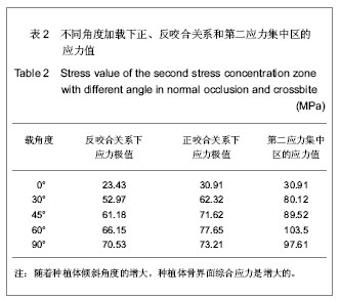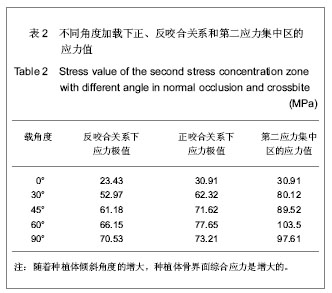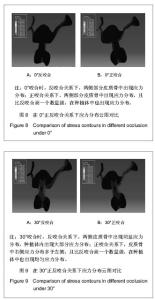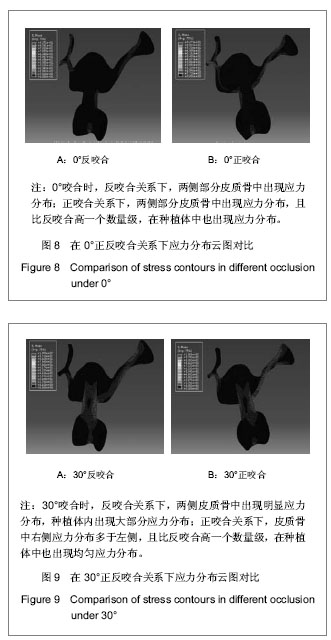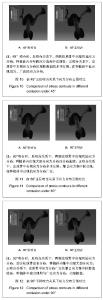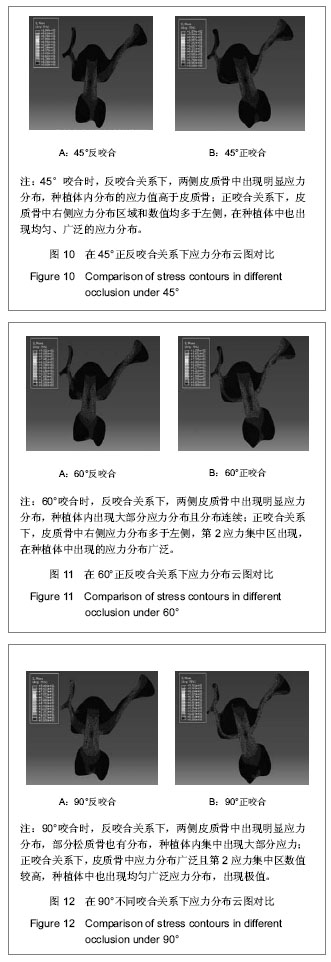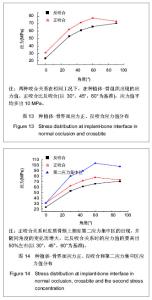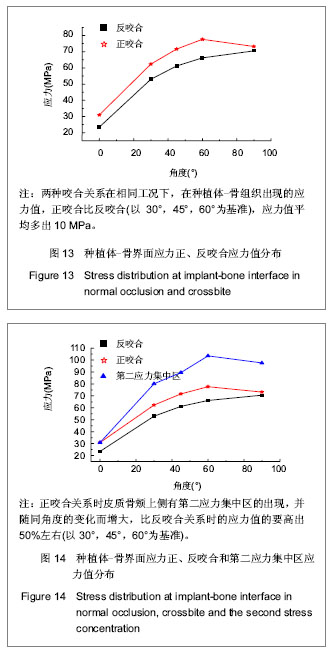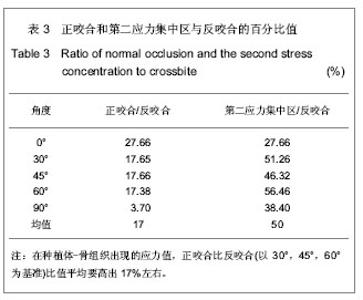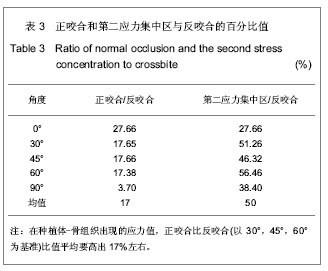| [1] ShapurianT,DamoulisPD, Reiser GM, et al. Quantitative evaluation of bone density using the Hounsfield index. Int J Oral Maxillofac Implants.2006;21(2):290-297.[2] Lin CL,Chang SH, Chang WJ, et al. Factorial analysis of variables influencing mechanical characteristics of a single tooth implant placed in the maxilla using finite element analysis and the statistics- based Taguchi method. Eur J Oral Sci. 2007;115(5):408-416[3] Blatz MB,Strub JR,Glaser R,et al.Use of wide-diameter and standard-diameter implants to replace single molars:Two case presentations.J Prosthodont. 1998;11(5):356-363.[4] Sun ZY, Cheng G, Zhang ML, et al. Guangdong Yabing Fangzhi.2010;18(1):46-48.孙振宇,陈光,张明睿,等. 大斜度上颌窦底侧方提升同期种植的临床探讨[J].广东牙病防治,2010,18(1):46-48.[5] Liu Bin,Lu CL,Zhang XY,et al.Yiyong Shengwu Lixue. 2010; 25(1):56-62. 刘斌,鲁成林,张修银,等.黏接剂厚度对IPS Empress II 全瓷冠应力的影响分析[J].医用生物力学,2010,25(1):56-62. [6] Fan LX,Ding GX, Fei WH,et al.Yiyong Shengwu Lixue. 2012; 27(1):102-107.樊黎霞,丁光兴,费王华,等. 基于CT图像的长管骨有限元材料属性研究及实验验证[J].医用生物力学,2012,27(1):102-107.[7] Huang YH,Nie EM,Cheng XY, et al. Zhongguo Zuzhi Gongcheng Yu Linchuang Kangfu. 2010;14(39):7263-7267.黄颖荷,聂二民,陈霞云,等. 上颌切牙区3种不同形式种植体固定桥三维有限元模型的建立[J].中国组织工程研究与临床康复, 2010,14(39):7263-7267.[8] Stegaroiu R, Sato T, Kusakari H, et al. Influence of restoration type on stress distribution in bone around implants: a three-dimensional finite element analysis. Int J Oral Maxillofac Implants. 1998;13(1):82-90.[9] Lai H, Zhang F, Zhang B, et al. Influence of percentage of osseointegration on stress distribution around dental implants. Chin J Dent Res. 1998;1(3):7-11.[10] Adell R, Lekholm U, Rockler B, et al. A 15-year study of osseointegrated implants in the treatment of the edentulous jaw. Int J Oral Surg. 1981;10(6):387-416.[11] Quirynen M, Naert I, van Steenberghe D. Fixture design and overload influence marginal bone loss and fixture success in the Brånemark system. Clin Oral Implants Res. 1992;3(3): 104-111.[12] Wu HP, Jiang XF, You J. Zhongguo Kouqiang Zhongzhixue Zazhi. 2009;14(4):105-108.吴海平,姜献峰,游嘉.牙种植生物力学分析的CAE前处理方法研究[J].中国口腔种植学杂志,2009,14(4):105-108.[13] Degidi M, Daprile G, Piattelli A. RFA values of implants placed in sinus grafted and nongrafted sites after 6 and 12 months. Clin Implant Dent Relat Res. 2009;11(3):178-182.[14] Zhang Y,Lei W,Wu ZX,et al. Yiyong Shengwu Lixue.2009; 24(1):50-53.张扬,雷伟,吴子祥,等. 膨胀式松质骨螺钉用于股骨颈骨折内固定的生物力学测试[J].医用生物力学,2009,24(1):50-53. |
